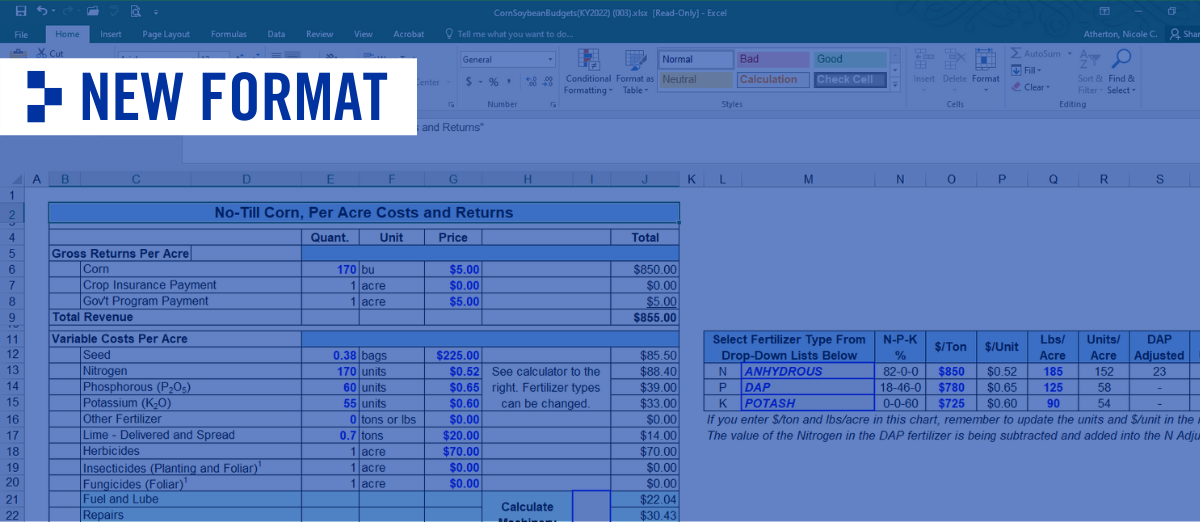COVID-19 and Kentucky’s Migrant and Resident Agriculture Worker Population
Author(s): Savannah Columbia
Published: October 28th, 2021
Shareable PDF
COVID-19 has impacted the lives of every resident in the Commonwealth of Kentucky. Many Kentuckians have dealt with school and workplace closures, supply chain malfunctions, and so, so much more over the past two years. Interestingly, a connection can be made between COVID-19 and Kentucky’s migrant and resident agricultural worker population.
Kentucky is home to a multi-billion-dollar agriculture industry which operates in part by the labor inputs of foreign-born residents and migrant or H2A workers. Kentucky is home to 196,618 foreign-born residents, making up 4.4% of Kentucky’s total population (Migration Policy Institute, 2019). Foreign-born residents include naturalized U.S. citizens, immigrants holding green cards, work visas, or student visas, and refugees. Of these 196.6K foreign-born residents, 3.1% work in the agriculture, forestry, fishing and hunting, and mining workforce sector (MPI, 2019). While the Migration Policy Institute assigned a value to the number of foreign-born workers in our industry, it is still an extremely hard number to quantify. However, Kentucky is one of the top 10 states of employment for H2A workers – approving 6,952 H2A workers in 2020 and 7,200 workers in 2021. With our state being dependent on the labor contribution of migrant and resident workers, there is a need for us to be aware of how COVID is impacting our labor force.
Exposure risk for COVID-19 among agricultural workers can be higher than expected because many farm crews carpool or travel together and share sleeping quarters or communal areas which may be difficult to social distance in. Migrant workers also may not feel like they can take advantage of prevention tools, such as vaccines, due to a lack of accessibility and misinformation. However, many states have developed variations of farmworker safety programs to help mitigate the spread of COVID-19 among agriculture workers. These include screening procedures, guidelines to follow for quarantine, and vaccination and/or testing incentives. Programs like these are important, especially for our state, as Kentucky is ranked 13th in agriculture worker deaths resulting from COVID-19 (for all ag workers, foreign and domestic). Purdue University recently published an interactive tool, Purdue’s Food and Ag Vulnerability Index (pictured below), which gives us an idea of Kentucky’s food and agriculture worker population and how it has been affected by COVID-19. Kentucky has one of the highest worker populations in the country, estimated at around 269,300 foreign and domestic workers. Of these, there have been 31,391 and 1,236 worker cases and migrant-specific worker cases, respectively. Worker safety is of the utmost importance to keep our food supply chain steady and sustainable. The University of Kentucky Cooperative Extension Service has worked to provide producers with guidelines and suggestions on best health practices to combat COVID, in both English and Spanish. Likewise, the University of Florida Extension has developed a farmworker safety training program to educate farm labor supervisors on COVID-19 mitigation in the workplace. Ideally, efforts such as these can aid in maintaining a safe workplace for our agriculture labor force.

Recommended Citation Format:
Columbia, S. "COVID-19 and Kentucky's Migrant and Resident Agriculture Worker Population." Economic and Policy Update (21):10, Department of Agricultural Economics, University of Kentucky, October 28th, 2021.
Author(s) Contact Information:
Savannah Columbia | Center for Crop Diversification Extension Associate | savannah.columbia@uky.edu
Recent Extension Articles
Family Living Expenses on Kentucky Farms
October 28th, 2021
There is likely no single item in a farm business cash flow with more uncertainty and more variability than “family living expense.” We tend to live on what’s left over after paying debt and taxes. However, the Kentucky Farm Business Management program does have accurate family living data for some of the farms in their records and management program.
New Features to Enterprise Budgets
October 28th, 2021
Enterprise budgets are designed to help farmers estimate profitability in the current and future growing seasons, and are also used by lenders and other agricultural-related professionals. Expected year-to-year changes in profitability can help farmers make decisions related to cropping decisions.




